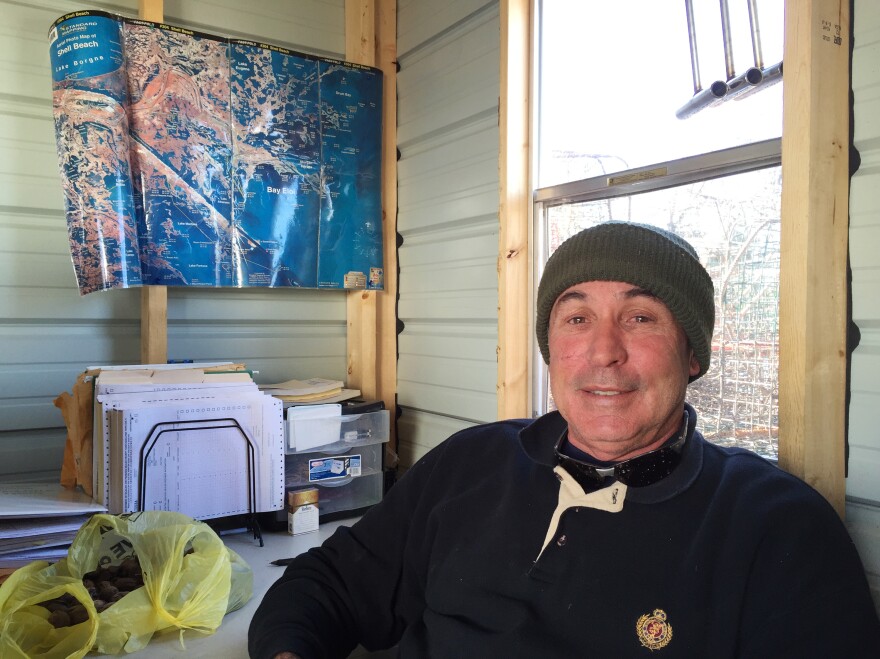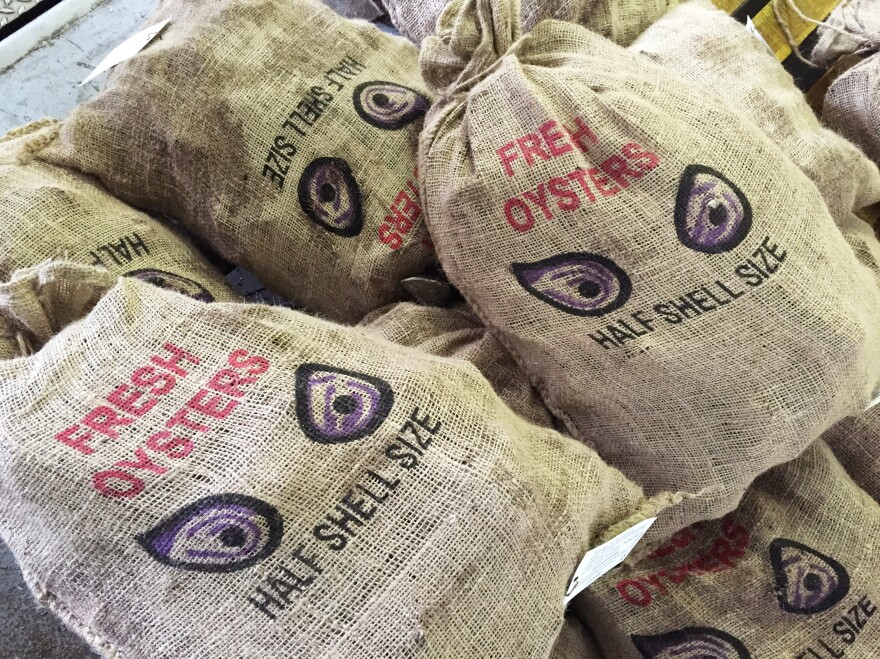In 2010, just after the BP oil well in the Gulf of Mexico exploded, seafood restaurants were bombarded with questions from concerned diners: "How bad is the spill?" "Is this from the Gulf?" "Is it safe?" Demand for Gulf seafood tanked.
"You have to remember, that was literally weeks and months on end when you could turn on the TV at any time of day and see an oil well leaking unabatedly into the Gulf of Mexico," says Brett Anderson, feature food writer for Nola.com.
Looking around a packed dining room at the local Cajun Seafood House in New Orleans on a recent day, it's clear that epidemic of worry is over. Ironically, now there's a supply issue: Seafood dishes have to be pulled from menus when orders fall through, and fishermen are losing longstanding customers.
As the spreads a message of safe and bountiful Gulf seafood, the ones doing the catching and distributing say that oysters and crab populations are dwindling. They mainly place the blame on the aftermath of the spill.
Over in New Orleans' French Quarter, Al Sunseri owns the 135-year-old , a harvester and distributor. That first year after the spill, Sunseri told reporters that he expected business would bounce back within a few years. That hasn't been the case.
"Now it's five years out and we're not anywhere near to where we thought we'd be," Sunseri tells The Salt. He says the seafood marketing board, which is funded by the state — and since the spill, by BP as well — is painting a rosier outlook than reality warrants.
"They're saying that the oyster landings are the same as what they were pre-oil spill, and there's no way," Sunseri says. "If it was, we would not have a 300 percent increase on the dock for the price of oysters."
When asked if he blames the spill, Sunseri doesn't bat an eye. "I attribute it all to the Deepwater Horizon oil disaster, and I'll never say it's anything but a disaster. It's not a spill, because spills are easily cleaned up, and this is the gift that keeps on giving."

Al Sunseri's son, Blake, is next in line to take over, but the family's not sure whether P+J will survive. "Put yourself in that position," Al Sunseri says. "You're thinking you're gonna be able to take over this whole company that's succeeded. But if things don't change soon, P+J may be a thing of the past."
About an hour outside New Orleans, in Hopedale, La., commercial fisherman Tony Goutierrez also worries about the next generation. "These younger kids, I've been telling them over the years to get an education, don't look down the line for this," he says.
Goutierrez has been catching crabs for 50 years. At first, he says, it seemed like crabs were back after the spill. But for the past few years, his traps have been coming up empty. "It's sad to see it go, but it's going — this way of life is going to disappear," he says.
According to the Louisiana Department of Wildlife and Fisheries, in 2009, the year before the spill, the average commercial blue crab landings in Louisiana totaled 53.1 million pounds. In 2013, the average landings were 38.8 million pounds. That same fisheries management plan reports that, between 2000 and 2013, the number of crabbers reporting at least one sale dropped by about a third.
If the fish aren't there, "fishing families are forced to either get out of the industry altogether or find ways to supplement their income," says Twyla Herrington Cheatwood of the program at the National Wildlife Federation, an environmental advocacy group.
Still, it's hard to confirm whether the drop in landings of crabs and oysters in the Gulf of Mexico is due to effects of the oil spill. That's because area scientists weren't really analyzing these waters closely before the spill — the funding just wasn't available, says Frank Hernandez, a scientist at the Gulf Coast Research Laboratory in Ocean Springs, Miss.

State and federal resources to conduct detailed monitoring of the Gulf didn't pour in until after the accident, so scientists don't have solid before-and-after snapshots to compare. "We were asked a lot of questions at the time and, honestly, we didn't have answers," he says. Hernandez says scientists now have a great responsibility to determine causation and impacts in the Gulf 10 to 20 years down the line.
Meanwhile, crabber Tony Goutierrez is struggling to meet the demands of customers he has had for decades — like Jerry Harris, who owns in Baltimore. The Chesapeake Bay only produces crabs for a few months out of the year, so restaurants look to the Gulf when their own source is not in season. Harris Crab House used to buy anywhere from 300 to 350 boxes of crabs a week out of Louisiana; now Harris says he's lucky to get a third of that.
This has caused a kind of identity crisis for the restaurant. Harris says he now wishes his place was called Harris Fish House, or Harris Seafood House — not Harris Crab House.
"Then it wouldn't necessarily say that I got crabs, you know what I mean?" Harris explains. "When a customer walks into a restaurant and says, 'Wait, you don't have any crabs today? You're Harris Crab House!' It's hard to tell these people I don't have crabs."
For the first time since opening in 1932, Harris Crab House has added steaks to its menu.
As for food writer Brett Anderson, he says he eats more Gulf seafood than ever nowadays — because he knows it may not be on menus forever.
"It's endangered, and it matters to the well-being of the place I live and love," he says. "When I'm out of town and see it on a menu, my eyes light up."
Copyright 2020 NPR. To see more, visit https://www.npr.org.


